
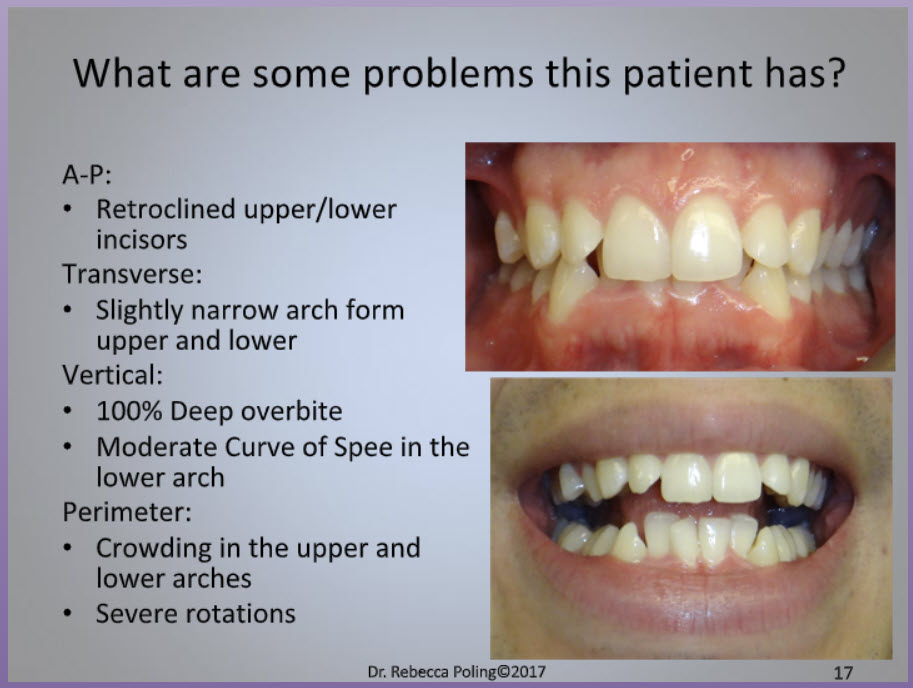
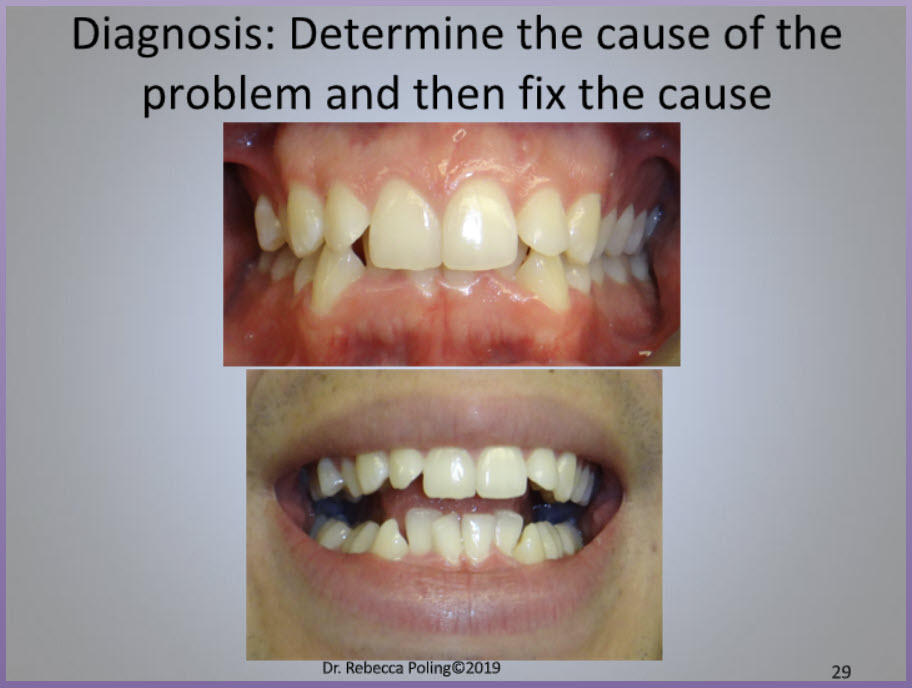
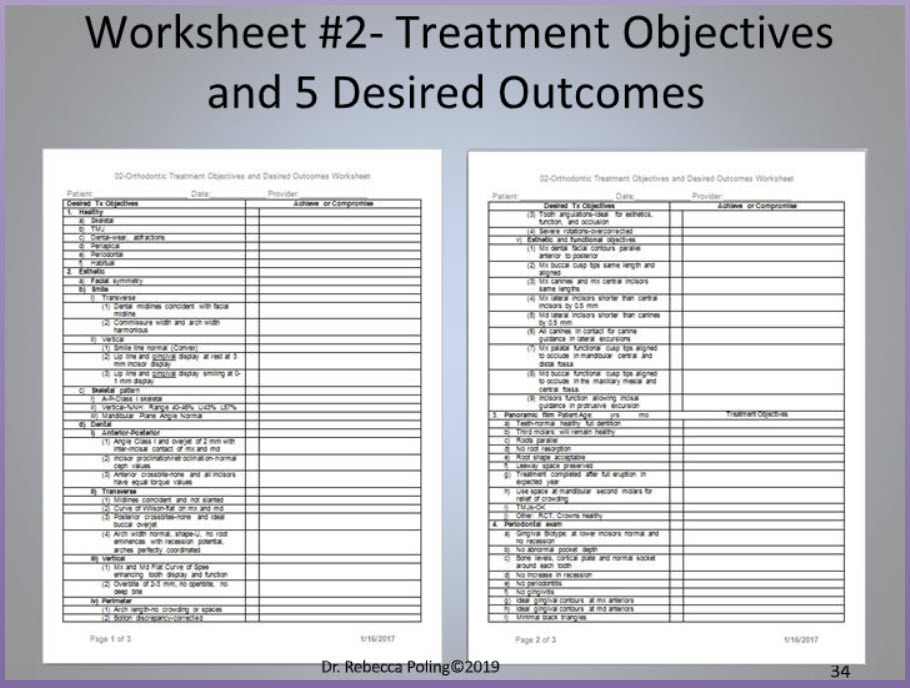
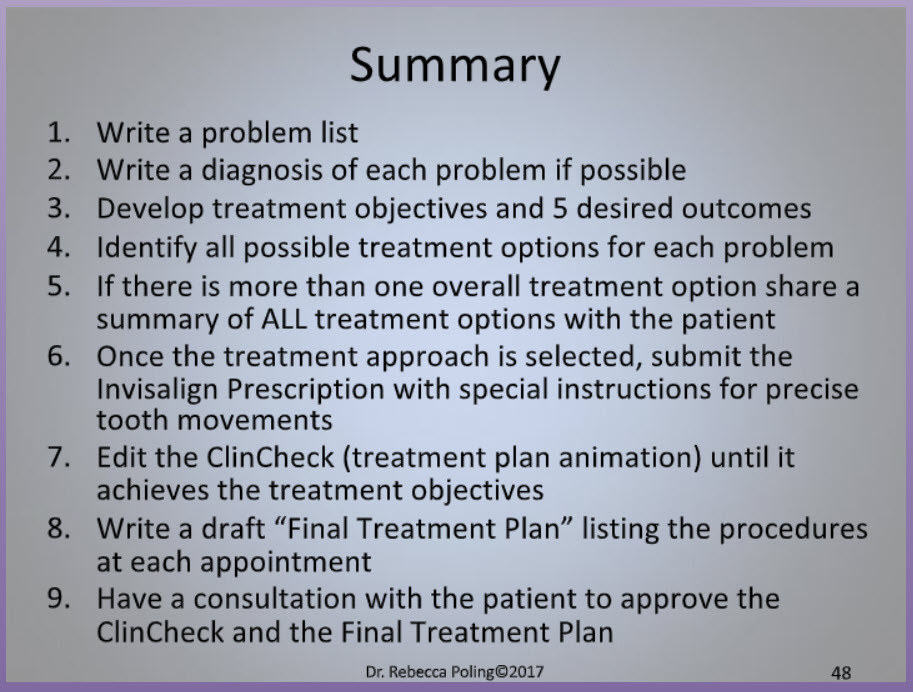
Click here to Download a
Detailed Description of 40.02-Basic Orthodontic Diagnosis & Treatment Planning ProcessIntended Audience and Prerequisites
The Intended Audiences for this course are dentists, dental hygienists, orthodontists, orthodontic assistants, dental specialists, and the students in these dental professions who plan to provide orthodontic care to patients. It is important for the clinician to follow a step-by-step process in diagnosis and treatment planning the orthodontic care for the patient. This process must be understood and then followed by the entire team for practice efficiency so that the patient will receive the best care with the most predictable and successful outcome.
All team members are involved in the process of delivering the best care for each patient. The doctor is the coach and the practice team carries out the treatment plan plays.
Course Content of 40.02-Basic Orthodontic Diagnosis & Treatment Planning Process
This course teaches a diagnostic process that is used generally to identify and solve problems. It is a way of thinking. It is useful in determining the cause of any problem and then figuring how to fix the cause.
Since this course was originally produced to train dental students at New York University, it is focused on identifying and diagnosing orthodontic problems and developing limited orthodontic treatment plans that involve clear aligner treatment provided by a dentist. This limited orthodontic treatment by dentists is very different from comprehensive treatment by orthodontists. Comprehensive orthodontic treatment focuses on achieving the best skeletal relationships and an ideal functional occlusion, in addition to excellent esthetics and long-term stability. Limited treatment by dentists is more focused on esthetics and long-term stability. This difference in orthodontic treatment performed by dentists or that performed by orthodontists is reflected in the treatment objectives or desired treatment results which are determined by the patient, not the practitioner.
This course covers the process of listing the orthodontic problems a patient has that can be treated by the dental professional. The process then involves diagnosing the primary cause of each problem. The next step focuses on identifying the desired outcomes of treatment that will satisfy the patient’s concerns and achieve a healthy result. Once the patient communicates the treatment objectives, the dental practitioner develops treatment plan options that will satisfy the treatment objectives of the patient. The patient then selects the desired treatment option and the dentist submits the case with a prescription that will achieve the desired objectives and then edits the treatment proposal until it appears to achieve the desired result. The patient approves the aligner treatment proposal so that treatment may begin. This usually results in satisfied patients.
This protocol is a process of knowing where you are going before you start, or treatment planning with the end in mind.
The Educational Goal and Objectives 40.02-Basic Orthodontic Diagnosis & Treatment Planning Process
Goal- The Goal of this course is to instruct the learner in the process of diagnosis and treatment planning that will guide the practitioner to the best treatment result.
Objectives- At the conclusion of this presentation the learner will:
- Write a problem list
- Write a diagnosis of the root cause and contributing factors to each problem
- Develop the treatment objectives for the correction of each problem
- Identify treatment options for each problem, listing the time involved for treatment, the cost involved for treatment, the advantages and disadvantages of each treatment option, and the ranking of each treatment option for addressing the concerns of the patient
- Share a summary of the treatment options with the patient to help the patient select the best treatment option when there is more than one option. Have the patient select the desired treatment option.
- Develop a list of special instructions for precise tooth movements on a treatment prescription that will address the desired treatment outcomes
- Make all necessary adjustments to the animated treatment plan (Invisalign ClinCheck) to achieve the treatment results
- Write a Final Treatment Plan to be followed that includes the final retention procedures that will hold the results indefinitely
- Obtain patient final approval of the selected treatment plan animation (ClinCheck) and approval of the Final Treatment Plan guiding procedures at each appointment. This will engage the patient in the treatment improving compliance and patient satisfaction with the results. A negative of this engagement of the patient, is that some patients get very picky and frustrated if the treatment is not exactly as planned on the Clear Aligner Animation. This means that you need to be careful what you promise.
Refer to the 40.02-Basic Orthodontic Diagnosis & Treatment Planning Process Course Description for more detail about each section in the course..
Course Materials Included in this CE Activity:
After creation of a free OrthoTraining Student Account, selection of the 40.02-Basic Orthodontic Diagnosis & Treatment Planning Process and payment of the US$60 subscription fee for 30 days of access, the user will receive:
- 30 days of access to the 40.02-Basic Orthodontic Diagnosis & Treatment Planning Process
- Interactive online Presentation available for unlimited viewing during the access period
- 1 Interactive online Knowledge Quiz to measure learning
- SCORM Tracking- Collects data on student viewing time, Presentation score, and Knowledge Quiz scores for "grade" reporting
- Student Dashboard Report- Listing progress in completion of the course requirements used to generate a "grade" for the course if needed
- Printable copy of the Course Completion Certificate with ADA-CERP OrthoTraining-Awarded CE Credits
- Downloadable digital copies
- Instructions for a Student Notebook - to include in a Student Notebook that also may enclose course documents and checklists
- Course documents: a Course Script listing the narration of each presentation slide
- Step-by-step and quality control checklists that are used in the hands-on training
- Online Feedback Form to OrthoTraining to evaluate the quality of the course
Other Information about this CE Activity: 40.02-Basic Orthodontic Diagnosis & Treatment Planning Process
Course Subscription Fee: 40.02-Basic Orthodontic Diagnosis & Treatment Planning Process subscription fee is US$60 for 30 days of access to the course and Course Resources for a single user.
The Course Instructor is Dr. Rebecca Poling, an ABO-certified orthodontist, former professor at a major US university, international lecturer, and the Founder of OrthoTraining. She has no conflicts of interest
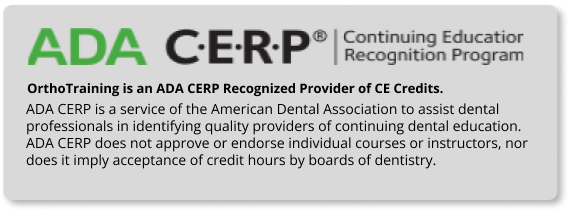
Select A Student
There are no students available yet. Please click on below button to create one.
Create a Student